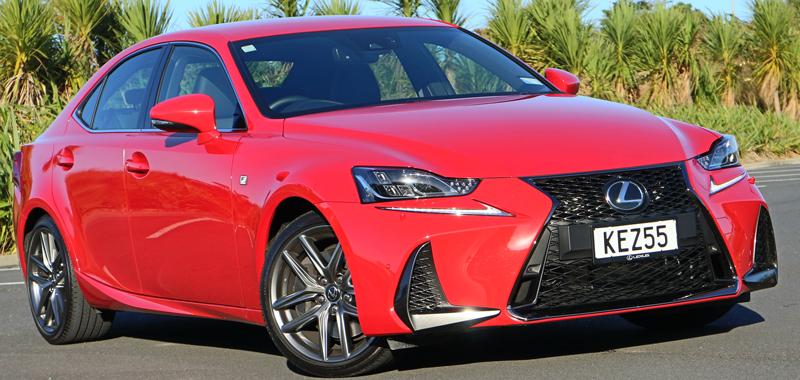Damien O’Carroll drives a brace of IS models, the 200t F-Sport and the 300h Hybrid.
There came a time, around 10 years after Toyota first launched Lexus, that the Japanese luxury brand needed to finally take the big (and potentially fraught) step of heading down the size range to take on the Mercedes-Benz C Class, Audi A4 and, most specifically, the BMW 3 Series.
As a rule of thumb, the smaller the car gets, the trickier the whole “luxury” thing becomes, so making the move downwards was always gong to be a risky one.
But Lexus managed to pull it off quite convincingly, with the first IS garnering praise from many quarters for its blend of sportiness and luxury.
Now the IS is on the verge of celebrating its 20th birthday and we have a newly facelifted version of the 3rd generation car that first appeared in 2013.
Now, while I will freely admit that the current IS’s looks are polarising, I personally love the aggressive, angular style of the current Lexus design language, particularly on the IS. It is very Japanese, very distinctive and, I think, very bold and handsome.
The red 200t you see on these pages is an F-Sport model and, as such, gets an even more aggressive exterior look, with the mesh look to the grille and gaping intakes, while the silver 300h is a luxury-spec Limited that is slightly more subdued. Slightly.
As always, the interior of the IS is utterly superb, with high build quality and seriously cool design. The seats in both are fantastic, while the lovely leather steering wheel is a tactile delight.
The 200t F-Sport gets the brilliant, yet completely pointless moving tachometer in the dash, while the 300h Limited gets a more conventional layout.
Both, however, are still stuck with the silly joystick controller instead of a far simpler touchscreen, while the infotainment system feels a bit dated now and there is no phone mirroring in sight.
Under their bonnets lurk two very different power trains, with the 200t getting an absolutely fantastic 180kW/350Nm 2.0-litre turbo four that is superbly smooth, refined and powerfu, and an 8-speed automatic transmission that is wonderfully slick, fast and smooth.
The 300h gets a 164kW 2.5-litre four-cylinder/electric motor hybrid drivetrain hooked up to a continuously variable transmission.
While the 200t is nicely eager and very keen to rev, it does sound rather characterless, but makes up for that with its fantastic flexibility and brilliant mid-range grunt.
While the 300h is nowhere near as revvy, eager or powerful, it makes up for that with remarkable fuel consumption – Lexus claim conbined consumption of just 4.9L/100km, and a quick 300km road trip over a weekend saw figures very close to this, even with some enthusiastic driving.
On the road, both cars are Incredibly lithe and nimble, and flow beautifully through corners. The 200t in particular is sharp and accurate, yet always remains comfortable and fantastically composed.
While the 300h feels a bit firm and slightly brittle for a luxury car, the 200t’s character suits this set up far more convincingly and it is a thoroughly wonderful corner carver, while still remaining convincingly refined. Just like the IS always has.
_____
Specifications
Body type Sedan
Drive RWD
Engine type Inline four-cylinder petrol (200t)/Hybrid (300h)
Engine capacity 2.0-litre (200t)/2.5-litre (300h)
Max power 180kW (200t)/164kW (total system output 300h)
Max torque 350Nm (200t)/200Nm petrol and 300Nm electric(300h)
l/100km (Combined) 7.5L/100km (200t)/4.9L/100km (300h)
C02 emissions 175g/km (200t)/113g/km (300h)
Boot capacity 480L (200t)/450L (300h)
Spare tyre Space saver (200t)/inflator kit (300h)
ANCAP rating 5 Star
Price $84,900 (200t)/$88,700 (300h)



